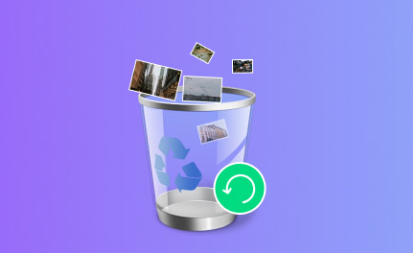The internet is vast, dynamic, and constantly changing. Websites, posts, articles, images, and other digital content are uploaded, modified, or deleted every second. Losing access to online information whether it’s an important article, a social media post, or an online document can feel frustrating. Many users wonder if deleted content from the internet can be retrieved, and the answer is often yes, depending on the circumstances, timing, and tools used.
When content is deleted from the internet, it usually means that the original server or platform hosting the data has removed it. However, this does not necessarily mean that all traces of the content are gone. The internet functions as a network of multiple systems:

Web servers and databases store the original content.
Search engine caches create temporary snapshots of pages.
Internet archives maintain historical versions of websites.
User devices and backups may store copies of downloaded or cached content.
Because of these redundancies, deleted content can sometimes be retrieved even after it has been removed from its original source.
Using Web Archives
One of the most reliable ways to retrieve deleted web content is through internet archiving services.
1. Panda Assistant (windows)
Deleted online content, such as web pages, documents, or social media posts, can feel lost forever. However, Panda Assistant offers tools and features to help users recover digital data that has been removed from the internet, servers, or cloud platforms. By leveraging its scanning and recovery capabilities, Panda Assistant can locate residual files, cached data, and backups that may still exist on connected devices.
Why Deleted Internet Content Can Be Retrieved
When online content is deleted, it often leaves traces in various locations:
Local device caches store temporary copies of visited web pages.
Browser downloads and synced cloud backups may still hold files.
Servers and archival services sometimes retain copies even after content is removed.
Panda Assistant scans these sources to identify recoverable files efficiently.
Steps to Recover Deleted Online Files
Stop Using Affected Devices
Avoid saving new files or installing applications on devices where content may exist to prevent overwriting.
Install Panda Assistant
Download and install the software on a separate drive or device to ensure recovery safety.
Scan for Residual Files
Use Panda Assistant’s Deep Scan feature to search local drives, browser caches, and connected cloud storage for deleted content.
Preview and Select
Review recoverable files, including documents, images, and videos, before restoring.
Recover to a Safe Location
Save recovered content to a separate drive or external storage to avoid overwriting additional recoverable data.
Tips for Successful Recovery
Act quickly, as overwriting new data can reduce recovery chances.
Use the software regularly to create local backups of important online files.
For critical content, consider creating a clone of the device or storage medium.
With Panda Assistant, even content deleted from the internet can often be restored, providing users with a reliable and efficient digital recovery solution.
2. Other Archive Services
archive.is: Captures on-demand snapshots of web pages and provides permanent URLs.
Memento Time Travel: Searches multiple web archives simultaneously to locate historical snapshots.
Search Engine Caches
Search engines like Google and Bing maintain cached copies of web pages. These cached versions can serve as temporary backups of content that has been deleted from the live web.
Google Cache
Search for the page URL or keywords in Google.
Click the small downward arrow next to the URL in search results → select Cached.
View the last saved snapshot.
Bing and Other Search Engines
Bing and other search engines also maintain caches, accessible via similar steps. Cached pages often contain text and images but may lack dynamic elements like interactive content or embedded media.
Retrieving Deleted Social Media Content
Social media platforms are common locations for deleted content, including posts, images, videos, and comments. Retrieval methods depend on the platform, whether the content was archived, or if backups exist.
1. Facebook
Activity Log & Archived Posts: Some deleted posts may remain visible in your account’s activity log if only hidden or removed from the timeline.
Third-party archives: Tools like SocialSafe or backupify can create personal backups of social media accounts.
2. Twitter/X
Google Cache: Cached pages of tweets may still be viewable.
Archives: Some services store historical tweets for public accounts.
Backup exports: Users who exported Twitter archives can recover previously deleted tweets.
3. Instagram
Recently Deleted Folder: Instagram retains deleted photos and videos in a “Recently Deleted” folder for 30 days.
Third-party backups: Personal backups or downloaded content may contain deleted media.
4. TikTok and Other Platforms
For short videos and posts, content may exist in cached versions, on other users’ devices, or in third-party archives.
Using Local and Cloud Backups
Sometimes deleted internet content can be recovered from local devices or cloud backups:
Browser Cache: Browsers like Chrome, Firefox, and Edge temporarily store copies of visited pages. Access cached content by checking browser directories or using developer tools.
Local Downloads: Files, images, or PDFs downloaded from websites may still exist on personal devices.
Cloud Backups: Services like Google Drive, OneDrive, or Dropbox may store copies of files downloaded from the internet.
Specialized Recovery Tools
Several tools and software can help recover deleted online content indirectly:
1. Web Scrapers and Archiving Tools
HTTrack: Downloads a complete website for offline browsing.
wget: Command-line tool to mirror websites locally.
Webrecorder: Creates interactive, replayable captures of web content.
2. Digital Forensics
Professional digital forensics can recover content from devices, servers, or cloud accounts. This method is useful when content is removed intentionally and other retrieval methods fail.
3. Data Recovery Services
For critical or high-value deleted content, professional data recovery services may recover cached or locally stored content from hard drives or mobile devices.
Legal and Ethical Considerations
Retrieving deleted content from the internet often involves ethical and legal concerns:
Privacy laws: Accessing private or deleted data without consent can violate privacy regulations.
Intellectual property: Recovered content may be copyrighted; redistribution may require permission.
Platform policies: Social media and website terms may prohibit certain types of data retrieval.
Always ensure that retrieval is performed ethically, legally, and with respect for privacy.
Limitations of Retrieving Deleted Content
While retrieval is often possible, there are significant limitations:
Incomplete archives: Not all web pages are captured by the Wayback Machine or other services.
Overwritten cache: Cached pages may be replaced by newer versions.
Dynamic content loss: Interactive elements, forms, and scripts are often not preserved.
Deleted media: Files removed from servers without backups may be unrecoverable.
Understanding these limitations helps set realistic expectations.
Preventive Measures
To minimize the risk of losing important online content:
Use web archiving tools to save important pages proactively.
Download copies of documents, images, and videos for personal backups.
Enable cloud backups for content on social media platforms.
Monitor websites and set up automated tools like IFTTT to archive content.
These steps ensure that content remains accessible even if the original source is deleted.
Practical Strategies for Retrieval
Check caches and archives first – Google Cache, Bing Cache, and the Wayback Machine often contain deleted pages.
Use browser history – Local copies of pages may exist in your browser.
Search for copies elsewhere – Other websites, reposts, or forums may have mirrored the content.
Contact website administrators – They may provide access to archived versions if legally permissible.
Leverage social media backups – Download personal social media archives before content is permanently removed.
Deleted News Articles: Journalists and researchers often retrieve removed news articles via the Wayback Machine or Google Cache.
Removed Social Media Posts: Activists or researchers track deleted tweets or posts using archival services and local backups.
Lost Educational Materials: Students recover deleted PDFs or online course content from caches or cloud backups.
Deleted content from the internet can often be retrieved, depending on the methods used and the time elapsed since deletion. Web archives, search engine caches, local and cloud backups, specialized recovery tools, and professional digital forensics all play important roles in retrieving lost data. Ethical and legal considerations must be followed, and realistic expectations should be set regarding limitations. By understanding the available retrieval methods and adopting proactive backup practices, users can recover important online content, preserve digital information, and mitigate the consequences of accidental or intentional deletion.
About us and this blog
Panda Assistant is built on the latest data recovery algorithms, ensuring that no file is too damaged, too lost, or too corrupted to be recovered.
Request a free quote
We believe that data recovery shouldn’t be a daunting task. That’s why we’ve designed Panda Assistant to be as easy to use as it is powerful. With a few clicks, you can initiate a scan, preview recoverable files, and restore your data all within a matter of minutes.

 Try lt Free
Try lt Free Recovery success rate of up to
Recovery success rate of up to









